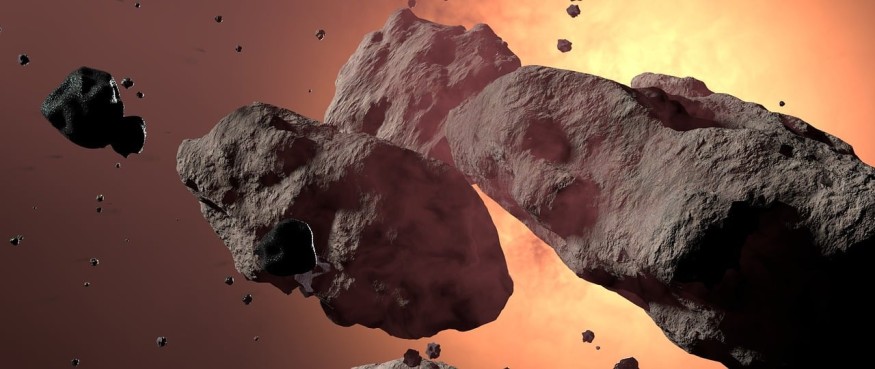
The asteroid was first detected last Saturday, which was two days after it was at its closest point to Earth.
Asteroid 2023 NT1 Moved Undetected
Forbes reports that the newly discovered asteroid moved in the same direction as the meteoroid that led to the most destructive impact on Earth in a century. However, Asteroid 2023 NT1 could actually be three times bigger compared to the said meteoroid.
The space rock was picked up by the Asteroid Terrestrials-Impacts Last Alert System (ATLAS) observatory in South Africa on July 15. It was found to be roughly 200 feet big, EarthSky reports. The fortunate news is that Asteroid 2023 NT1 did not pose any threats to the planet.
Asteroid 2023 NT1's close approach made it enter a 60,000-mile radius of Earth. While this seems to be large breathing room, in space scale, it is remarkably near. In fact, it is closer to the space area where some of Earth's biggest satellites are orbiting.
READ ALSO : Massive Asteroid About the Size of 69 American Alligators Will Pass by Earth Tuesday, NASA Warns
Asteroids By the Sun
EarthSky explains that the rock remained undetected until two days after its closest approach due to how it came from the Sun's direction. This particular area is also known to be a weak spot when it comes to planetary defense efforts.
The European Space Agency, however, has plans to deal with such loops in a planned mission known as NEOMIR. This mission will focus on picking up asteroids that come from the direction of the Sun. As such, it will be orbiting between the Sun and the Earth at the L1 point.
The NEOMIR will serve as an asteroid early warning system that will alert earthlings about rocks that are at least 65 feet in size. It will help detect objects that Earth's instruments are unable to pick up.
The downside, however, is that NEOMIR is set to be launched in 2030.
Chelyabinsk Meteor
Aside from this, another notable asteroid that moved toward Earth from the direction of the Sun was the Chelyabinsk meteor, which broke up in the Earth's atmosphere on February 15, 2013, in Russia. Scientists think that the rock was roughly 65 feet big.
The rock burst into the atmosphere. It also facilitated a shockwave that led to the destruction of thousands of structures. As such, around 1,500 people got injured due to glass shards from broken windows flying all over. This is also considered the largest asteroid to hit the planet in more than a century.
Near-Earth Objects
According to the ESA, there could be roughly one million near-earth asteroids that have a width of 30 to 100 meters. Around 98% of these rocks, however, are still undiscovered.
Forbes adds that, most of these asteroids often seem to remain distant on orbits of their own.
RELATED ARTICLE : Earth Has Three Times Higher Risk of an Asteroid Impact Than Previously Thought, NASA Warns
Check out more news and information on Space in Science Times.
© 2026 ScienceTimes.com All rights reserved. Do not reproduce without permission. The window to the world of Science Times.











